How to Hide Wires in Exposed Ceiling (6 Expert Methods)
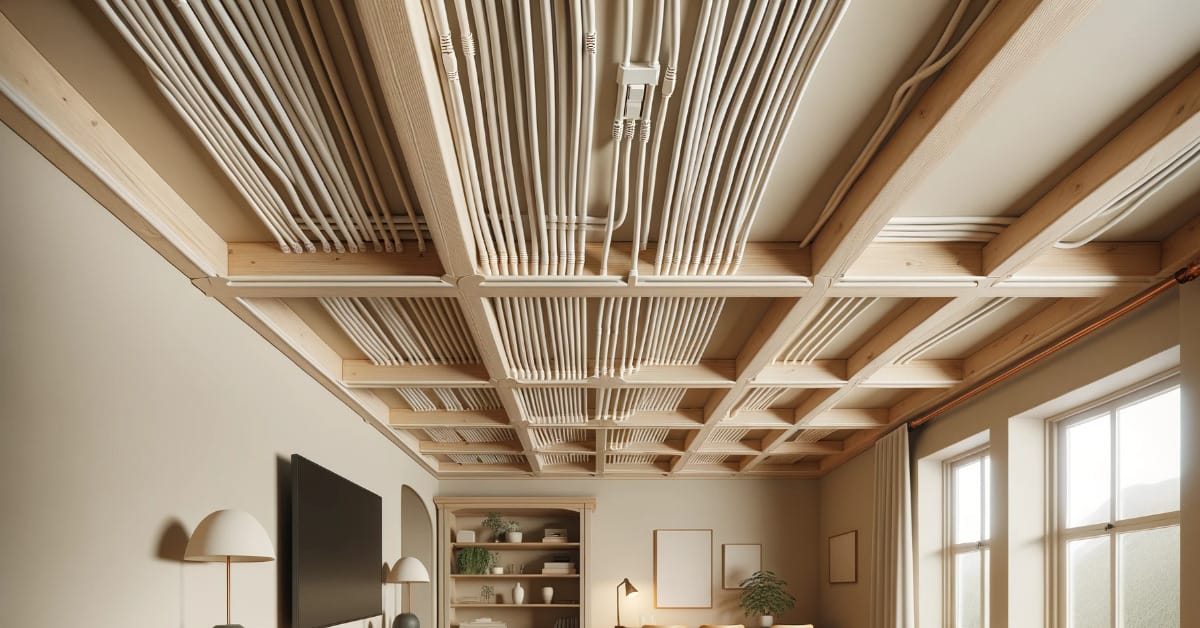
Do you have unsightly wires draping off your ceilings making you embarrassed to have guests over?
An exposed ceiling can look messy if not taken care of properly. Wires are neither attractive nor safe when exposed to a ceiling. I have dealt with contracts and houses before where we needed to cover these wires up, so today ill be sharing my experience and favorite 6 methods with you.
In general, to hide electrical wires from ceiling cords, you can do it by painting them with a color that matches your ceiling. For a more attractive look, attach cable covers that fit your walls or make use of crown molding. A ceiling box is another option to conceal grouped wiring.
Read on where I’ll go through these methods and more in detail.
Hide Your Wires: 6 Easy Ways to Do It!
Electrical wires are not always the best house décor. There are various basic solutions for concealing cables in your house. There is no need to be an electrician to do this efficiently. Consider one of these inventive and easy solutions for hiding electrical cables in your ceiling.
1. Use Cord Concealer Covers
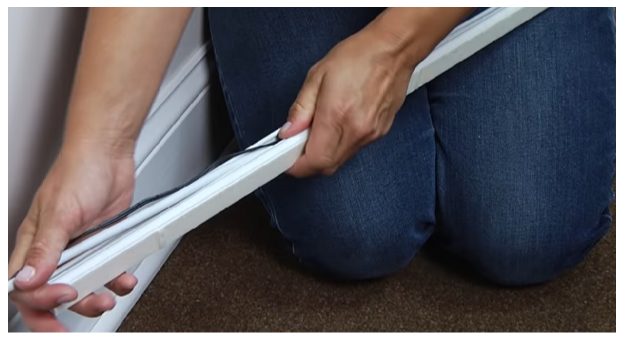
Cord covers are one way to conceal ceiling wiring. These cable raceway covers are straightforward to install. Drill through the cable covers for the ceiling wires to follow across the ceiling to the wall. Depending on the texture of your paint, you may also use a double-sided adhesive to affix the cord covers to your walls.
Remember to select coverings with a pattern and color that will mix in with the wall paint. Properly clean and dry any area before applying the cable covers for best results.
2. Use Crown Molding
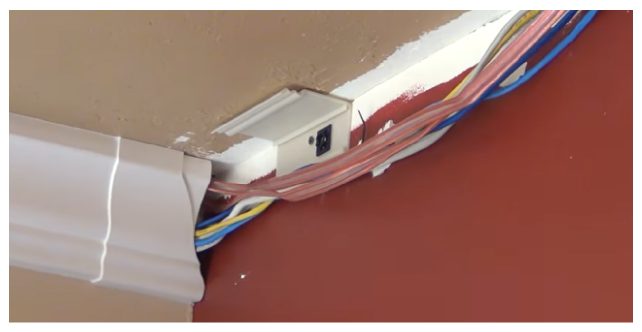
Crown molding is another way to go. Find a molding style that complements the décor of your home and buy enough to line the entire room. Just apply the finish before inserting the wood if you are cutting it yourself. If molding is placed on both sides of the room, use corner blocks to make installation easier. Pre-drill the holes in which you have marked the moldings and set them in place.
Only do this molding job if you have carpentry experience! If not, contact a professional to install it correctly.
3. Dropped Ceiling
If you need to conceal your cables, try using a ceiling box to disguise them. Find a box that matches the color of your ceiling paint, or use them to make colored highlights for your house.
Many ceiling box choices disguise the screws upon installation, giving your ceiling a clean appearance. Many of them are also paintable, allowing you to match the color of the box to the ceiling paint prior to installation.
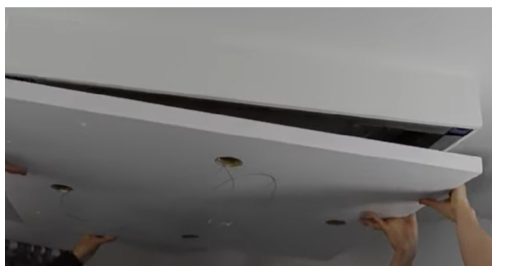
Drop ceilings or suspended ceilings are lower than standard ceilings and are ideal for concealing unattractive components such as sprinkler system outlets or ceiling wiring. These ceilings are more common in office buildings, although they can also be seen in several residences.
4. Electrical Wires: Use As Decorations
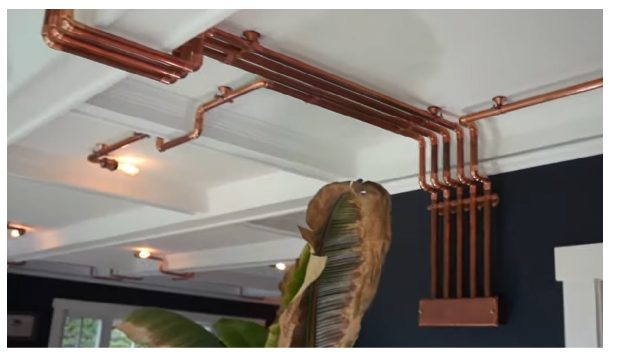
Use the electrical wires to renovate your residence and turn your exposed ceiling area into an industrial-chic place. If your walls are bland, paint the cables black for a striking contrast and draw parallel lines on the ceiling and across the wall. This will give your room a geometric and trendy vibe!
5. Electrical Wires: Paint Them Up!
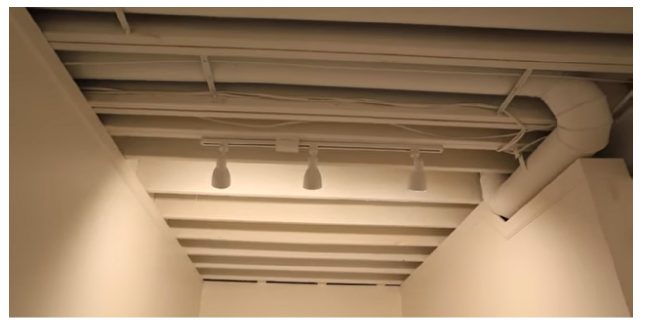
Another option is to paint your wires. It is an easy way to hide electrical wires and ceiling cords that do not require any installation. For even coverage, use spray paint and water-based paint. Before painting, lay down a tarp and put on safety gear. When using spray paint, it is best to use a mask, gloves, and safety goggles.
Note: Don’t cover any plugs or switches with paint!
Your ceiling wires may require more than a single coat of paint to obtain desired effects. Paint the ceiling and the cables to blend them into the paint for a more seamless effect.
6. Create Your Own Wire Design

There is a simple solution to conceal cables without using unsightly cover-ups. You can make a flawless cord concealer anytime with just a little adhesive and a cable tracing tool. Allow enough wire for adhesive to stick onto, and avoid constructing too many loops or bends.
Advantages of Exposed Ceilings
Natural Lighting
Skylights offer additional natural light, which is especially visible if your construction faces south, which receives the most sunshine.
Modern Interior Designs
An open ceiling offers you design flexibility through the use of unique lighting and plumbing fixtures. Your mechanical and electrical equipment may be used as decorative components.
Additional Space
A standard covered ceiling frequently makes a room appear much smaller, but an open ceiling creates the illusion of extra space even in a busy area. Exposed ceilings also allow hot air to escape, making rooms cooler, which can be useful in hot areas.
Disadvantages of Exposed Ceilings
Skilled Labor
Exposed ceilings lack several elements used in suspended ceilings. The ancient ductwork and plumbing in older buildings with suspended ceilings are frequently unclean and unappealing, necessitating a lot of labor and money to obtain a pleasant “exposed” appearance. In addition, for exposed ceilings, ducts and pipes must be painted, which needs skilled effort. (1)
Additional Labor Costs
As the construction industry expands, more trained labor is required. Although open ceilings use fewer materials than drop ceilings, the savings are generally outweighed by the labor-intensive operations necessary for an open plenum.
Sound Factors
Because exposed ceilings lack the sound-absorbing function of suspended ceiling tiles, they require soundproof treatment. Surfaces on exposed ceilings typically generate an echo chamber, necessitating the use of spray-on acoustic materials.
Higher Power Costs
Although exposed ceilings are less expensive to install, they are less efficient as a heat barrier. These increases summer heat gain and seasonal heat loss, increasing HVAC expenditures.
Maintenance Costs
Exposed ceilings involve regular cleaning and repainting, whereas suspended ceilings do not. In general, suspended ceilings are less expensive.
Exposed ceilings may give a building an aesthetic atmosphere, resulting in a productive and attractive environment for employees and occupants. However, extensive planning is required to ensure outstanding performance and maintain pleasant working circumstances. (2)
FAQs
Are exposed ceilings more affordable?
The building of an open ceiling is not cost-effective and might increase the cost of constructing space. The less efficient your heating and cooling are, the more money you will spend. Exposed ceilings make a room feel lighter and more spacious.
Is it possible to remove ceiling beams?
To remove the decorative beams, no special equipment is required. The procedure is just a reversal of the initial setup. Remove the attachment points, the beam, and the mounting board.
Can I leave the ceiling wires out?
Yes. This is safe. To minimize hooking on moving ladders, wallboard, and so on, tuck the capped wires entirely into junction boxes. Install empty cover plates if the room is still in use.
Is it legal to do surface wiring?
It is critical to understand that surface wiring is only permissible indoors and has several safety risks when used outside.
Take a look at some of our related articles below.
- How to cap off electrical wires
- How to run electrical wire in unfinished basement
- What gauge wire for light fixture
References
(1) Skilled Labor – https://www.indeed.com/career-advice/career-development/skilled-labor
(2) productive and attractive environment for employees – https://www.entrepreneur.com/article/336044
